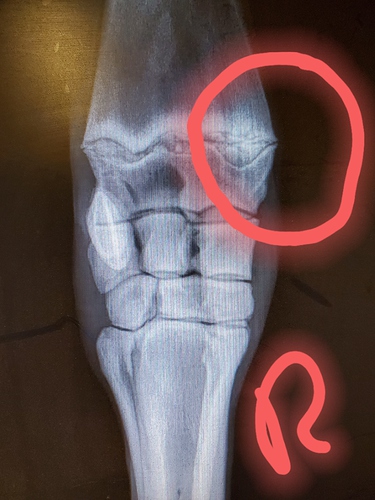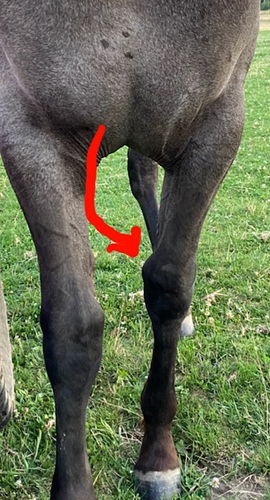FYI I have not talked to the examining vet nor have the radiographs been reviewed by an outside vet yet. Hopefully, that will be done early next week.
I’m in the process of purchasing a yearling AQHA filly. I have seen the filly in person but just loose in the field since she wasn’t halter broke at that time. She has a bit of a knobby knee so x-rays were taken by the seller’s vet yesterday (rural area so limited vets). Filtered through seller, vet indicated that enlargement is most likely due to trauma such as a kick from another yearling or mare. Supposedly, vet said that this condition would not be a concern for her to purchase this filly.
I’m trying to educate myself as much as possible so that I can understand the condition and ask better questions of the vets. Does anyone have input on “physitis” in a yearling? Filly is said to be sound moving around the pasture and plays hard with the other youngsters. Will the excess bone growth be remodeled to normal if the inflammation can be quieted down? Any idea what the long term prognosis / complications might be? Enlargement is on the left knee. The right is for comparison. (Sorry for typos, my phone is giving me fits)



